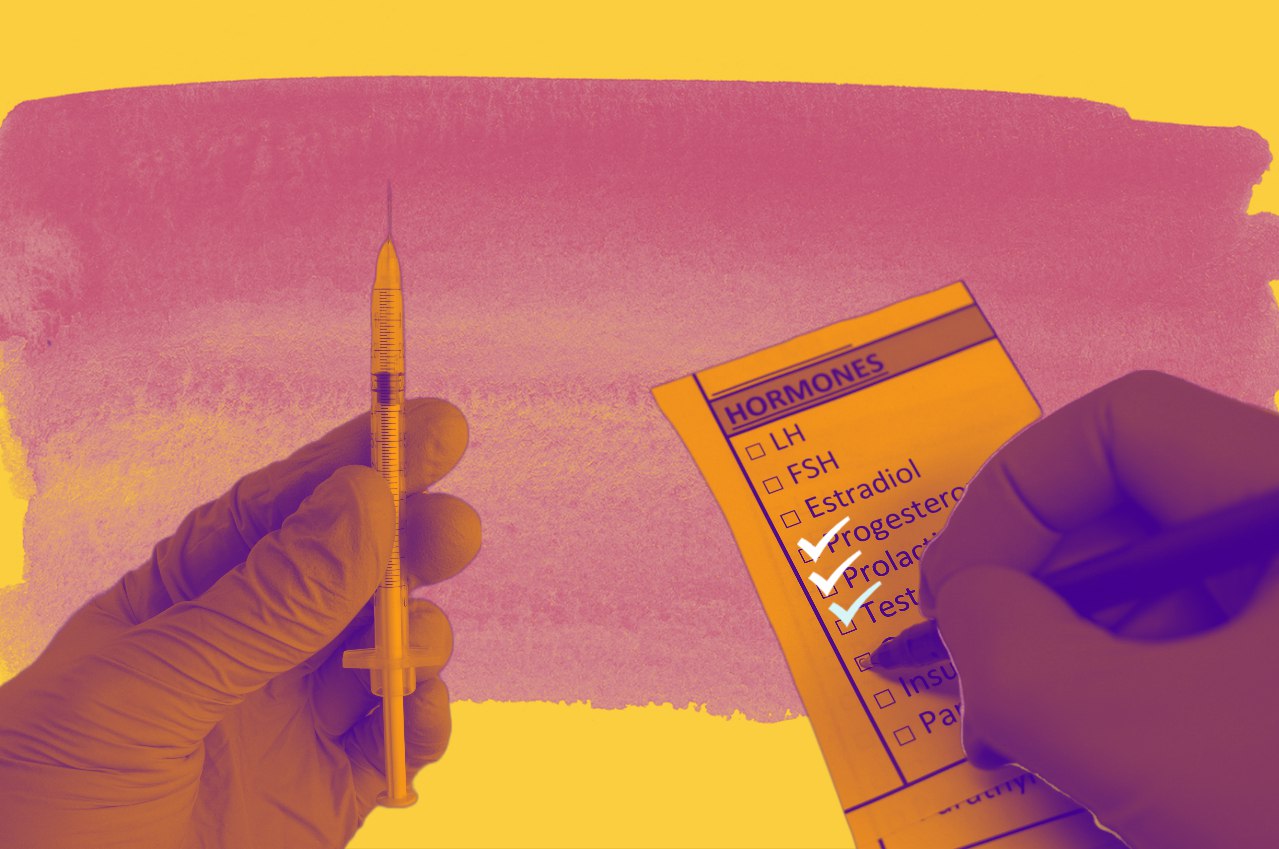Nowadays, it seems like hormones are at the root of everything. The list ranges from malaise, fatigue, growth problems, low libido, sleep issues, and mood disorders to more desirable, positive effects on physical or intellectual performance, in youth, in beauty. Once, while taking part in a survey about hormones, Paula told us very matter-of-factly that she had recently started a testosterone treatment. For what? She said two older family members (a man and a woman) were using it to reduce fatigue and improve libido. Since she hadn’t been feeling very well after a series of health problems, she asked her gynecologist: "What about testosterone? And he replied: ‘you can use it; it’s going to help you a lot.’ And we ended up not even talking much (...). But he said testosterone would give me a bit of direction, clear my mind and give me more stability.".”
This simple conversation draws attention to aspects that have become commonplace in our daily lives. I will call these elements our hormone fascination and attraction to the magic of drugs. Drugs can seem magical to people who believe they are always the quickest and most efficient solutions to treat various problems. There seems to be an underlooked idea that almost any situation that afflicts us these days could be solved by employing medication, a magic pill. Nowadays, we benefit immensely from scientific and medical developments that afford us better health conditions and allow us to prevent and control many diseases. By no means am I questioning these benefits. I am arguing, instead, that it has become common, perhaps precisely because of the success of drugs in many treatments, to expect everything to be solved by the perfect medicine. This is especially true for problems that are poorly defined, too vague, and related to or caused by conditions that are much more complex and difficult to solve. Paula was facing a challenging phase in her life: she suffered from post-traumatic stress after having lived through an episode of violence and several other problems. But she seemed comforted by the idea that one more drug (along with several others she was already taking) could improve her life and give her a sense of well-being. What I am questioning here, then, is this immediacy tying a poorly defined problem to a pharmaceutical resolution.
As for the fascination with hormones, the question is how these substances have become a common language to talk about the most diverse conditions. When Paula approached the subject with her doctor, he quickly said that testosterone would help her tremendously: it would provide direction, focus, stability, and clarity. These ideas also came up during interviews with several doctors and gynecologists who advocated the benefits of testosterone, particularly in improving sexual desire. But how could this be possible? Could the mere addition of this hormone do all that in someone’s life? How can patients and doctors consider this to be possible? It's a kind of magic. In this particular case, testosterone magic. This hormone is primarily associated with male bodies. To understand that, we need to look at its history and the effects historically attributed to it.
In a sense, hormones seem to function as messengers that do more than transmit chemical substances: they also help reveal information about our society, in terms of gender, for example. We can perceive them as metaphors that help us understand how specific values are redefined or reaffirmed. More precisely, we need to pay more attention to the meanings underlying the recurring references to the entity "hormone" as an explanation or evocation of so many differences. Let's consider the contextualization of this type of hormonal explanation against a broader historical reference. We can see that it’s all part of a broader process.
As many studies have shown, at the end of the 18th century and the beginning of the 19th century, scientific knowledge—primarily medical—was dedicated mainly to defining the differences between men and women, conceiving them as radically inscribed in nature, which, in turn, was perceived as immutable. These differences would be present in anatomical design and physiology and spread to behaviour, affecting emotions and intellect. One of the reasons women shouldn’t have access to education, for instance, was that men had bigger brains. This way, an observed anatomical difference was used to justify distinct social roles for men and women.
Later, in the 20th century, there was a shift from an anatomical/physiological paradigm to a search for biochemical elements that could substantiate gender differences. Women’s general behaviour was described in terms of cycles and substances governed by reproductive organs, especially the ovaries. Women, as a category, proceeded to be explained away through stages such as puberty, pregnancy, breastfeeding and menopause. At that point in time, substances produced by the ovaries and the secretions of the testicles start to dictate differences between men and women. Those were new ways of pinpointing differences intended to be perceived as natural.
Until the 1920s, it was widely believed that the hormones produced by the ovaries and testicles were specific and exclusive, endowed with a unique role in sex determination. The presence of female hormones would only be possible in women and would determine their sexual characteristics. Likewise, male hormones would be unique to men and determine male characteristics. Around then, experiments on animals began to show both types of hormones in males and females. Although clear scientific "evidence" had been observed contradicting the sex-specificity theory, science did not respond to that—at least, not immediately. The academic community received the new data with much resistance and discomfort. It took a decade for scientists to accept a new relationship between hormones and sex. In the following years, experiments in which "female" hormones were found in males were still described with amazement. In addition to that, the presence of "male" hormones in females was researched for the first time and received with less interest. Little by little, we start seeing a quantitative difference in the presence of hormones typical of males and females. Despite scientists eventually recognizing the non-exclusive nature of the hormones’ origin and function in clinical practice, physicians, and gynecologists, among others, continued to promote a more simplistic dualist-type model.1,5.
In this historical reference, we see the normative force that traditional conceptions of gender had in defining sex hormones. Over the last century and in the first decades of the 21st century, we have witnessed great transformations in the production of knowledge about the so-called sex hormones. But, curiously, the premise of exclusivity is still prevalent despite the proof of the existence of different types of hormones, both in bodies described as male and in those presented as female. The idea that male or female hormones enforce different behaviours still persists.
It is based on this "tradition" that one can better understand, but in no way justify, how testosterone can be quickly prescribed to give direction, stability and improve libido in women. Behind this is a binary conception of bodies and genders that attribute distinct qualities to human beings based on different hormonal compositions. So, since Paula is complaining about more general problems and a lack of libido, a hormone could be used to benefit her: testosterone, which embodies qualities such as strength, insight, potency, desire, and energy, traditionally associated with male bodies. Interestingly enough, doctors are always adamant about how women should stick to low doses of testosterone to not cause "masculinizing effects." However, the indications are still very vague. Above all, they seem to be based on these symbolic associations between testosterone and masculinity without discussing the origins of these associations and whether they still make sense.
This process only reiterates what seems to have become a language used for simplistic explanations. A long time ago, "hormones" left doctors’ offices to become a standard reference that everyone would understand. When you say, for example, "it's just hormones," many people tend to agree, not questioning what that is supposed to mean. As if there was an ultimate truth in hormones—as if they were the absolute causes of people’s behaviour or afflictions and, simultaneously, potential gateways for treatment and cure. Besides reflecting on how they have been used in our ordinary, everyday language, I’m using this phenomenon to think about how we produce particular demands for intervention in our bodies and minds based on high-performance expectations. We might be searching for a life that is simply too good to be true, even with all the medications in the world.
References
Credits
© [motortion] / Adobe Stock

